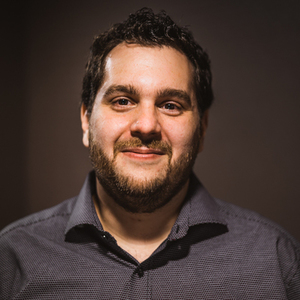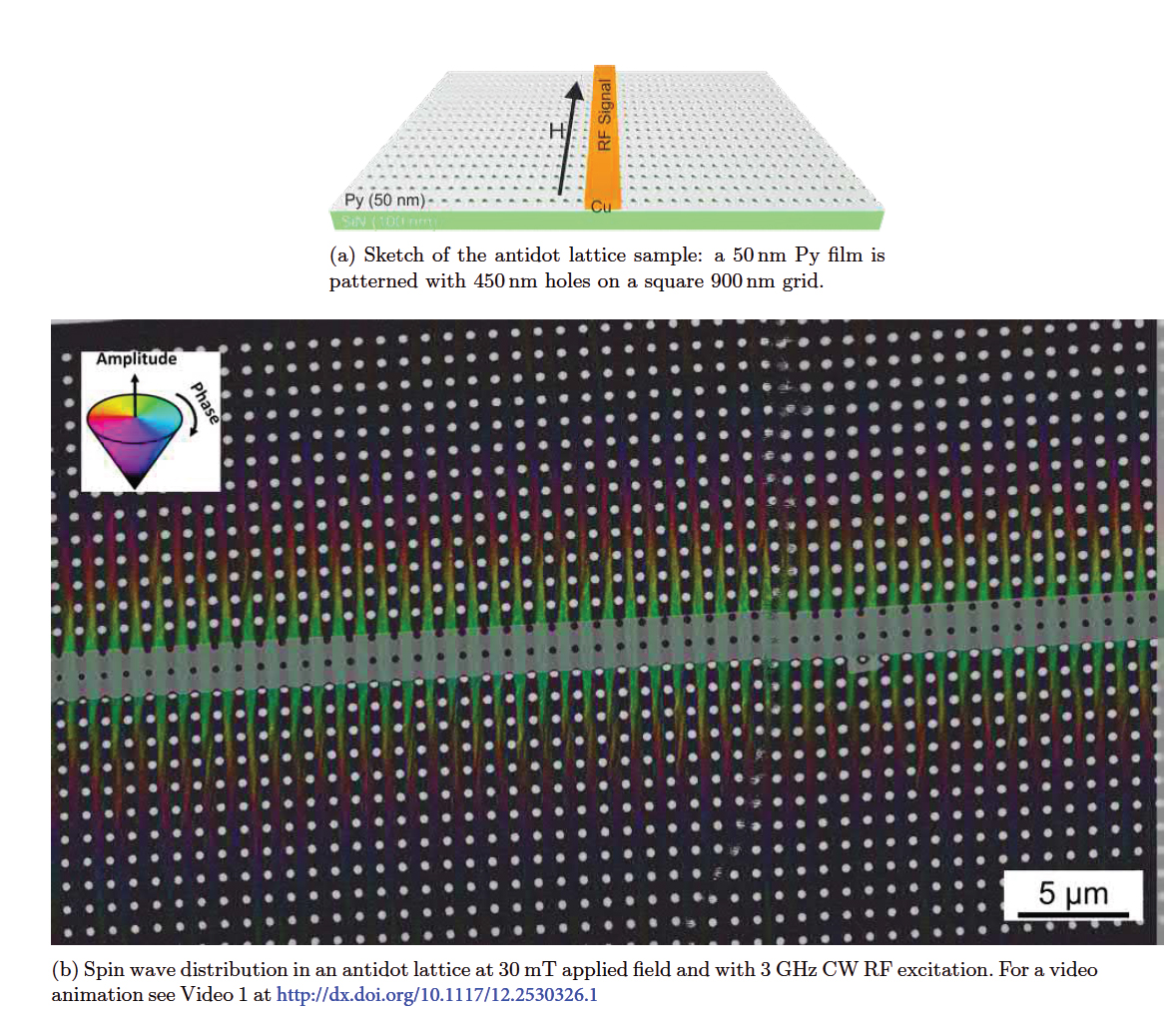
Modern Magnetic Systems
Joachim Gräfe
- Research Group Leader

Modern Magnetic Systems
Felix Groß

Modern Magnetic Systems
Hermann Stoll
- Research Scientist

Modern Magnetic Systems
Nick-André Träger
- Doctoral Researcher

Modern Magnetic Systems
Johannes Förster
- Doctoral Researcher

Modern Magnetic Systems
Eberhard Goering
- Research Group Leader

Modern Magnetic Systems
Gisela Schütz
- Director

Magnonics research, i.e. the manipulation of spin waves for information processing, is a topic of intense research interest in the past years. FMR, BLS and MOKE measurements lead to tremendous success and advancement of the field. However, these methods are limited in their spatial resolution. X-ray microscopy opens up a way to push to spatial resolutions below 100 nm. Here, we discuss the methodology of STXM for pump-probe data acquisition with single photon counting and arbitrary excitation patterns. Furthermore, we showcase these capabilities using two magnonic crystals as examples: an antidot lattice and a Fibonacci quasicrystal.
| Author(s): | Gräfe, J. and Weigand, M. and Van Waeyenberge, B. and Gangwar, A. and Groß, F. and Lisiecki, F. and Rychly, J. and Stoll, H. and Träger, N. and Förster, J. and Stobiecki, F. and Dubowik, J and Klos, H. and Krwaczyk, M. and Back, C. H. and Goering, E. J. and Schütz, G. |
| Journal: | Proceedings of SPIE |
| Volume: | 11090 |
| Pages: | 1109025 |
| Year: | 2019 |
| Publisher: | SPIE |
| Bibtex Type: | Article (article) |
| DOI: | 10.1117/12.2530326 |
| State: | Published |
| Address: | Bellingham, Washington |
| Electronic Archiving: | grant_archive |
| Language: | eng |
BibTex
@article{escidoc:3167984,
title = {Visualizing nanoscale spin waves using MAXYMUS},
journal = {Proceedings of SPIE},
abstract = {Magnonics research, i.e. the manipulation of spin waves for information processing, is a topic of intense research interest in the past years. FMR, BLS and MOKE measurements lead to tremendous success and advancement of the field. However, these methods are limited in their spatial resolution. X-ray microscopy opens up a way to push to spatial resolutions below 100 nm. Here, we discuss the methodology of STXM for pump-probe data acquisition with single photon counting and arbitrary excitation patterns. Furthermore, we showcase these capabilities using two magnonic crystals as examples: an antidot lattice and a Fibonacci quasicrystal.},
volume = {11090},
pages = {1109025},
publisher = {SPIE},
address = {Bellingham, Washington},
year = {2019},
slug = {escidoc-3167984},
author = {Gr{\"a}fe, J. and Weigand, M. and Van Waeyenberge, B. and Gangwar, A. and Groß, F. and Lisiecki, F. and Rychly, J. and Stoll, H. and Tr{\"a}ger, N. and F{\"o}rster, J. and Stobiecki, F. and Dubowik, J and Klos, H. and Krwaczyk, M. and Back, C. H. and Goering, E. J. and Sch{\"u}tz, G.}
}